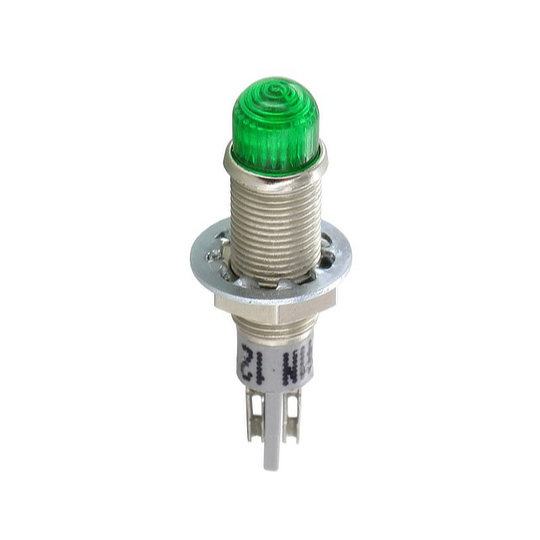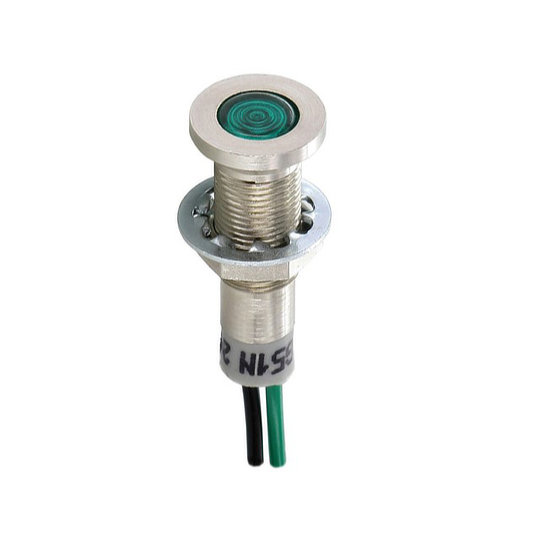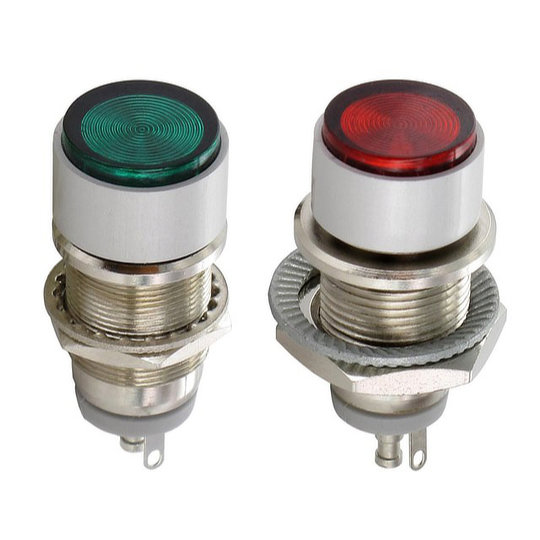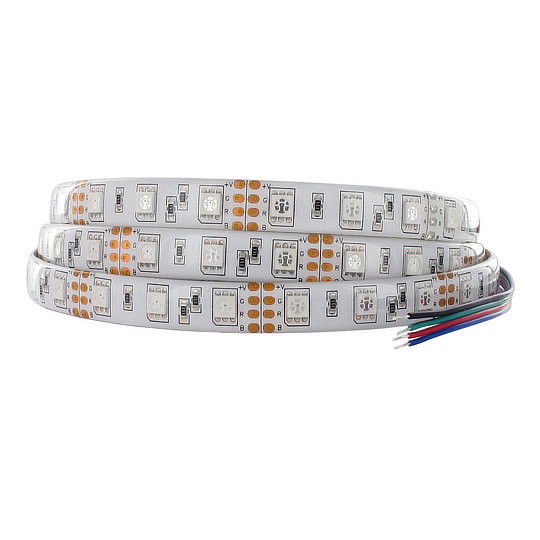24th February 2021
What is an LED and How do they Work?
What Does LED Stand for?
LED stands for Light Emitting Diode. To break this down further a diode is a semiconductor that will allow current to flow in one direction while restricting the movement of current in the opposite. For reference a semiconductor is a material that will pass electricity not as easily as a conductor such as copper wire does, but better than an insulator such as plastic. As a byproduct of a diode under electrical current photons are produced and by altering the semiconductor materials these photons escape at different wavelengths which we can see as different coloured light being emitted.
History of the LED
The concept of electroluminescence, producing light from electricity, is at the heart of LED technology. An English engineer called Henry Joseph Round was the first person to report light emissions from a diode in 1907, this light was too faint for any real-world applications but it was the beginning of the LED we know today.
In 1920 this phenomenon was replicated by Bernhard Gudden and Robert Wichard Pohl, but it was not until 1927 when Russian scientist Oleg Losev began to properly study light emitting from solid-state diodes and published his theories.
The actual term electroluminescence was published for the first time in a report on light being produced by Zinc Sulphide powder when an electric current was passed through it by George Destriau in 1936. This was followed shortly afterwards in 1939 when Hungarian physicists Zoltán Bay and György Szigeti took out a U.S. Patent demonstrating that visible light-emitting diodes were possible.
It was not until 1952 however that this phenomenon of light-emitting diodes was finally explained by Professor Kurt Lehovec following his research into Oleg Losev’s theories. This opened the way for other researchers to take these findings further primarily in relation to the materials they used. In 1955 Rubin Braustein reported that Gallium Arsenide diodes could emit infrared light when electrified. Following further research Rubin and his partner, Egon Loebner patented a Lead Antimonide and Germanium alloy which could emit green light in 1958.
In 1962 a scientist working for GE called Nick Holonyak Jr invented the first red light diode on the visible spectrum which opened up the first commercial use of LEDs in the 60’s with IBM first using these LEDs for an early computer in 1964 followed by Hewlett Packard incorporating the LEDs into its calculators in 1968.
With one of the main components used within these LEDs being Gallium Nitride crystals a reliable and easy source would be required to ensure LEDs could become a more viable option. This led to researchers Herbert Maruska and James Tietjen developing a way to grow Gallium Nitride crystals and publishing a paper outlining their methods in 1969.
In 1971 the first blue LED was created by Jacques Pankove and Edward Miller by using Zinc doped Gallium Nitride, however much like the first record of light emissions in 1907 this blue light was not bright enough for any useful applications. This was followed in 1972 by the creation of the first yellow LED by an electrical engineer M. George Craford who used a red and a green Gallium Phosphide chip. Craford then went on with fellow researchers Walden C. Rhines and Herbert Maruska to successfully created a blue LED using Magnesium doped Gallium Nitride rather than Zinc doped. This Magnesium doped variant, although still offering very low light, set the standard for the development of future blue LEDs.
Shortly after in 1976 the first high brightness and efficient LED was created by Tom Pearsall; this LED was bright enough to open the way for higher quality optical fibre communications.
Throughout all this time only single colour and non-white LEDs had been possible due to the elusiveness of a high brightness blue LED. So, starting in 1986 physicists Isamu Akasaki and Hiroshi Amano worked on developing a high-quality Gallium Nitride that would be required for a blue LED. In 1993 an electrical engineer called Shuji Nakamura with the assistance of Akasaki and Amano managed to create the first high brightness blue LED which quickly led to the development of white LEDs through the utilisation of red, green and blue LEDs in a single unit.
By 2002, white LEDs were commercially available however extremely expensive at around £90 per bulb. Even so with their long life, and lower power consumption many public buildings began to make the change to LED lights, with them becoming much more common in the early 2000’s. By 2020 LEDs had become one of the main sources of light with prices coming down and people swapping out their old halogen and florescent bulbs at home for energy-efficient LED bulbs. With the focus on environmentally friendly, low cost and highly efficient lighting being ever more prevalent it is highly likely that LEDs will be the primary light source going into the future.
LED Anatomy
How do LEDs work?
There are two main factors that allow an LED to work. First is the diode, which is an electrical component comprising of two terminals that only allows electricity to flow in one direction. One key point here is that all diodes release photos, however not all diodes emit light. The second factor allowing an LED to work is the type of semiconductor material used, the changing of these materials is what allows the photons to be seen in different colours due to the wavelengths at which they are emitted.
A diode is made up of two layers of semiconductor materials sandwiched together. These two semiconductors are called the p-type and n-type. The p-type semiconductor creates electron deficiencies when a current is passed through it, thereby the atoms within the materials lose weakly bound electrons, this is sometimes referred to as the p-type layer having holes. The atoms within the n-type semiconductor however have an excess of electronics.
Due to the electron holes in the p-type layer and the excess in the n-type layer, when the diode is in an un-electrified state the electrons in the n-type side flow into the p-type side. The effect of this movement leads to the n-type side having a positive charge and the p-type side a negative charge. This is what prevents an external current from flowing in the wrong direction, if an incorrectly attached current were increased however then at a certain point this would be enough to break the bonds causing the diode to blow. When an electrical current is passed through the diode it is said to have a forward bias, this means the current is moving from the positive terminal connected to the p-type layer and into the negative terminal connected n-type layer. When an electrical current is passed through the diode the current forces the atoms in both the p-type and n-type sides to move towards the junction area, the area where the two sides meet. This increases the exchange of electronics from the n-type side to the p-type side which significantly increases the number of photons released.
By using certain materials such as Gallium, Aluminium and Indium the wavelength at which these photons travel out of the diode can be adjusted which results in visible light of different colours being produced. It has also been discovered that most of the light produced by the diode comes from the junction contact nearer the p-type region, due to this LEDs are designed so that this area is kept close to the surface ensuring the maximum amount of light is transmitted.
How do LED Lights change colour?
It is important to note that LED’s do not change their colour, LEDs are however available in a variety of colour wavelengths from unseen light such as ultraviolet and infrared through the entire spectrum of human colour vision.
As mentioned previously this change in colour is due to the use of different materials. For instance, Aluminium Gallium Nitride gives out ultraviolet light, Indium Gallium Nitride creates a blue/violet light, Silicon Carbide a blue, Gallium Phosphide a green, Gallium Arsenide Phosphide a yellow/orange and Aluminium Gallium Indium Phosphide a red light. There are also many different variations that produce lighter or darker variations of these colours.
Due to the range of colours available this means that by mixing two or three different diodes in a single housing it is possible to get many more colour variations. It also means that by mixing red, green, and blue the first white LEDs could be produced. Recently, a new way to manufacture white LEDs has been created, by utilising a blue LED with a short wavelength of around 450 to 470 nanometres combined with a phosphor material, yellow light is created. This yellow light when mixed with the remaining blue light results in white light being created. This is more cost-effective to manufacture than using 3 different diodes and reduces the amount of energy required.
LEDs can also be controlled by microcontrollers which can change the current delivered to individual diodes within a mixed diode LED or light strip. These are predominantly RGB, red, green, and blue but can also incorporate a white diode for an RGBW LED or strip. By individually adjusting the different currents on an RGB light it is possible to create up to 256 different shades of each colour resulting in 16.7 million colour combinations.
Types of LED
When you google LEDs, you will notice that there are a few different types of LEDs available, one thing to remember here is that internally they are all identical. That being said the external variations available allow for LEDs to be used in many different applications. The styles most people will be aware of are the LED replacements for home lighting with bayonet, screw, or GU pins for connecting to an existing light system. However, there are many more types used in commercial and industrial applications.
The most commonly seen LED light you will find are through-hole LEDs which usually come in a standard 3mm or 5mm diameter. These have two long pins and a domed top which can be clear or coloured. These can be used for breadboard circuits when learning about electronics or creating new projects or within products as indicator lights. The other main style seen is the SMD or surface mount device LED, these are flat LEDs that can be fitted to PCB or into lengths to create LED strips, which we will discuss later.
The majority of LEDs sold by Live Electronics Ltd are manufactured by Sloan AG and IDEC, these are indicator lights, also known as pilot lights, illumination units and LED strips. Indicator lights are designed to relay information to an operator of a product this could be through a warning light, machine is running light or any other information which will need to be visually seen. Illumination units are pre-built lighting units that are larger and are designed to illuminate a work area or instrument panel whereas, LED strips are flexible lighting systems similar to illumination units.
The types of indicator LEDs we supply are coloured cap indicators, flat indicators, front exchangeable indicators, reflector indicators and plastic indicators. A coloured cap indicator is simply a housing with different styles of bezel and different coloured caps over the LED. The different coloured cap means that an operator can see immediately the colour of the light even if the LED is turned off.


The next types of indicators which are commonly used are flat indicators and reflector indicators. The difference between these is that the flat indicators have a flat bezel with either a flat or domed lens whereas a reflector indicator usually, but not always, has a higher shaped bezel that reflects the light in a certain way. Both styles are available in similar housings and colours but are used in different ways. A flat indicator is useful when machines are required to be wiped down regularly or products require a smoother finish, these can also be RGB allowing for a larger variety of colours to be used. A reflector indicator however is used more in areas where light needs to be focused on a certain point or a much brighter light is required such as for use in areas with high ambient light levels.

Another type of LED which can be very useful within industrial environments are front exchangeable indicators. These are comprised of a mounting socket which is fitted to the equipment and will accept a matching LED. The LEDs come with both the LED and lens in a single unit, this allows for a broken LED or an LED with broken lens to be quickly replaced without having to dismantle the equipment to do so, saving costly downtime to the machines. Another option available is a fully plastic indicator these tend to be cheaper, lighter, and slightly larger than their metal counterparts as such these are seen a lot in industrial applications such as control panels.
The final type of LED product Live Electronics Ltd offer are LED strips, as mentioned above these use SMD LEDs which are combined into a single length of flexible LED lights. These can be unprotected or protected by being covered in a layer of silicone with some being IP68 rated for underwater use. These types of strips are available in single colours, RGB or RGBW making them ideal for interior design applications, high-end products, TV and Film and custom projects. Due to the flexible nature and the use of RGB LEDs and microcontrollers LED strips are being found in more and more applications where aesthetics are a major selling point.

Advantages of LED Lights
The main reason you hear people changing to LED lights from previous forms of lighting is their longer lifespan and efficiency. Whilst it is true that LEDs are efficient with some claiming to be up to 90% more efficient over incandescent bulbs, due mainly to incandescent bulbs producing 90% heat and 10% light compared to modern LEDs offering 95% light and only 5% heat. But there are many other advantages to LED lights, as mentioned they last much longer than older technology, but they also do not contain toxic elements which can be found in older technology. In a time when global warming is a paramount concern to many people a light source which does not pollute the planet while offering a longer service life at lower energy costs is an ideal solution.
From a design and manufacturing point of view these benefits go further than the green benefits mentioned above. The energy savings allow for higher brightness bulbs to be used for the same power consumption or the ability to lower power consumption of a product and increase its battery life. LEDs are also better at focusing light meaning light is not lost in all directions and is delivered to the required area. They also produce very low amounts of heat so are not only safe for operators and consumers but can be used in areas which are temperature sensitive. They also do not emit harmful ultraviolet light which means they will not damage materials, paints or dyes making them idea for museums and art galleries, while dedicated ultraviolet LEDs are ideal for forensic and scientific use.
LEDs are also more robust and resilient than older style bulbs which makes them a great choice for equipment which is subjected to extreme environmental factors, impacts and vibrations such as off-road vehicles, agricultural equipment, marine, military, medical and scientific equipment. LED strips can also offer huge potential for designers to create incredible visual lighting designs whether this be in high end luxury vehicles, within commercial and office buildings or for TV and film.
These are the main reasons why LEDs are now chosen over other types of lighting. If you are interested in incorporating LEDs into your next design speak to a member of our sales team at [email protected].
Contact our sales team today to discuss your LED requirements! Contact Us
Latest from the blog
Live Electronics Introduces IDEC’s HG1G Human-Machine Interface: A High-Performance Solution for Industrial Automation
Posted on 18th November 2024 by Marcia Pearson
The New ISO 10218:2023 Standards: Enhancing Robotic Safety in Industrial Environments
Posted on 13th November 2024 by Marcia Pearson
Live Electronics to Showcase Leading Suppliers GT Contact & Degson at EDS 2024
Posted on 2nd October 2024 by Marcia Pearson
Custom Cable Assemblies
Posted on 8th August 2024 by Marcia Pearson
